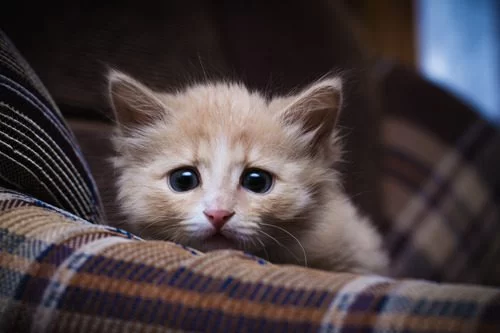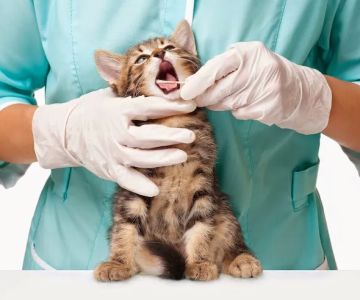- Understanding Anxiety in Cats
- Common Signs of Anxiety in Cats
- Behavioral Changes and Health Effects Related to Cat Anxiety
- Real-Life Example of Cat Anxiety and Its Management
- Expert Tips for Helping Anxious Cats
- How Hidden Brook Veterinary Can Support You
1. Understanding Anxiety in Cats
Anxiety in cats is a common but often overlooked issue that affects many felines across all breeds and ages. Unlike humans, cats cannot express their feelings verbally, so their anxiety manifests through various behavioral and physical signs. Recognizing the signs of anxiety in cats is crucial for pet owners who want to ensure their cats lead a healthy and stress-free life.
Cat anxiety can arise from multiple factors such as changes in environment, introduction of new pets, loud noises, or past traumatic experiences. Understanding the causes helps in addressing the issue effectively and improving your cat’s overall well-being.
1.1 What Triggers Anxiety in Cats?
Common triggers include moving to a new home, unfamiliar visitors, separation from owners, or disruptions in their daily routine. Cats are territorial by nature, so even small changes can cause significant stress. Medical problems can also mimic or worsen anxiety symptoms, making veterinary evaluation important.
2. Common Signs of Anxiety in Cats
Identifying cat anxiety symptoms early enables timely intervention. Anxiety in cats often reveals itself through a mix of subtle and obvious behaviors.
2.1 Physical Signs
Some physical signs include excessive grooming to the point of hair loss, trembling, rapid breathing, dilated pupils, and changes in appetite. Cats may also hide more than usual or show restlessness, pacing around the house.
2.2 Behavioral Indicators
Behavioral changes often involve increased vocalization such as yowling or meowing, destructive scratching, avoiding interaction, or inappropriate elimination outside the litter box. Aggression toward humans or other pets can also be a sign of anxiety.
2.3 Subtle Signs That Are Easy to Miss
Sometimes anxiety presents as reduced playfulness or less interest in usual activities. Owners might notice their cat being clingier or, conversely, more withdrawn. These subtle shifts require close observation over time.
3. Behavioral Changes and Health Effects Related to Cat Anxiety
Unchecked anxiety can lead to serious health problems in cats. Chronic stress affects the immune system, making cats more susceptible to infections and illnesses. Anxiety-related behaviors can also cause self-inflicted injuries from over-grooming or aggression.
Behavioral issues may escalate, resulting in damage to household items or strained relationships within the family. Recognizing these changes as signs of anxiety rather than misbehavior is key to providing appropriate care.
4. Real-Life Example of Cat Anxiety and Its Management
Consider Luna, a once playful cat who began hiding constantly and refusing to eat after her family moved to a new house. Her owner noticed signs of anxiety such as excessive grooming and loud meowing at night. Consulting with Hidden Brook Veterinary, they implemented a behavior modification plan involving environmental enrichment, pheromone diffusers, and scheduled interactive play sessions. Over several weeks, Luna gradually regained her confidence and returned to her affectionate self. This example highlights how understanding and responding to the signs of anxiety in cats can dramatically improve their quality of life.
5. Expert Tips for Helping Anxious Cats
Helping an anxious cat involves patience, consistency, and sometimes professional intervention. Here are some expert-recommended strategies:
5.1 Creating a Safe Space
Designate quiet, comfortable areas with hiding spots and familiar scents. Cats feel more secure when they control their environment.
5.2 Maintaining Routine
Consistency in feeding times, play, and human interaction reduces stress. Predictability helps anxious cats feel safe.
5.3 Using Calming Aids
Pheromone sprays and diffusers can mimic natural calming signals. Dietary supplements and prescribed medications may also be helpful under veterinary supervision.
5.4 Enrichment and Interaction
Regular playtime with interactive toys stimulates natural hunting instincts and relieves anxiety. Positive reinforcement builds trust and confidence.
6. How Hidden Brook Veterinary Can Support You
Hidden Brook Veterinary offers comprehensive support for pet owners concerned about signs of anxiety in cats. Our experienced team provides behavioral assessments, personalized treatment plans, and product recommendations designed to reduce feline stress effectively.
Whether your cat shows mild signs or severe anxiety, we help you navigate the best approaches for calming and comfort. Visit Hidden Brook Veterinary to discover tailored solutions and expert care that prioritizes your cat’s mental and physical health.












